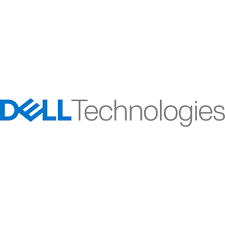Dell Technologies held the “Perspectives – 2021 and beyond” Asia Pacific and Japan (APJ) media briefing on 8 January. Co-hosted by Amit Midha, President, APJ and Global Digital Cities, and John Roese, Global Chief Technology Officer, the virtual briefing looked back at organizations’ top IT priorities in 2020 and discussed the technology trends that will lead 2021 and beyond.
“2020 was a year of acceleration as we have seen. We had a front row seat to the overnight digital transformation and drastic changes to how we work, learn and live. Today, despite us working from home, businesses have continued to run smoothly. That is the power of technology,” Midha said, addressing media from Singapore on Friday.
Midha added that innovation has accelerated. Last year, the company made major announcements such as the launch of PowerScale, PowerStore and Project APEX. “We are building on our industry-leading portfolios to empower organizations, to make sure that we are the essential infrastructure company for the data era,” Midha said.
Quantum computing and semiconductors amongst top emerging technology trends
For the technology trends in 2021 and beyond, Roese pointed to the quantum computing arena and said that viability for the technology is still many years in the future. Quantum computing is “a disruption, but it will not disrupt the conventional computing market.” Roese further elaborated that quantum technology is “an accelerator, an augment to conventional computing.”
“Last year, quantum computing was still a work-in-progress and most people had no access to it. This year, we have enough quantum systems which are present in public clouds, industrial companies and government labs. This will be the year that will enable broader software development ecosystems to experiment with quantum computing. This is the first year that a computer scientist with no prior access to quantum computing can go into a simulator and start to learn the language of quantum, several years before turning that into value.”
Roese also pointed out semiconductors as a top technology trend to note.
“We are moving from the era of homogeneous compute to an era of heterogeneous compute. This means that homogenous compute like x86 will be highly augmented with Domain Specific Architectures (Accelerators), and semiconductor ecosystems are reorganizing for this domain.”
Roese highlighted that there would be an equal amount of changes happening with software modernization and integration platforms such as future servers. These changes will not only happen technically but at an industry level this year.
Room for innovation with 5G and multi-cloud bringing changes to the edge
According to Roese, the idea of 5G will cease to be a consumer product and dominated by enterprises.
“In 2021, we will have true standalone 5G materialize and it will include advance features. Enterprise use cases will dominate the technical landscape of 5G, for both public and private deployment models. The fundamental architecture of 5G will move away from the telco and shift to a cloud and IT architecture, which will be open and software-defined for the first time,” he continued.
Roese made the last prediction on the edge. Edge proliferation will emerge as a major issue of multi-cloud edges with too many independent edge systems. Edge architecture will evolve to discriminate between edge platforms (pools of shared capacity) and edge workloads (extensions of processing and data tasks).
“In 2021 and 2022, we will see the shift to building edge platforms that can run multiple edge experiences and software-defined services on them to solve the edge proliferation problem. Edge platforms will become major new areas of on-premise IT capacity delivered as both product and as-a-service,” he elaborated.
Midha said that these trends are applicable to the Asia Pacific and Japan (APJ) region. Midha concluded with Dell Technologies’ 2030 moonshot goals and reiterated that the company will make its positive social impact real and measurable – by cultivating inclusion, advancing sustainability, transforming lives, and upholding privacy and ethics.
“Ultimately, we believe that what we do is not only essential, but if done right, will make the world a better place. I strongly believe that technology and data combined with human spirit are, and will always be, positive forces in the world. We are headed towards a future that is bright and extraordinary.”
2 mins read
Quantum computing and the data era: 2021 and beyond perspectives by Dell Technologies


